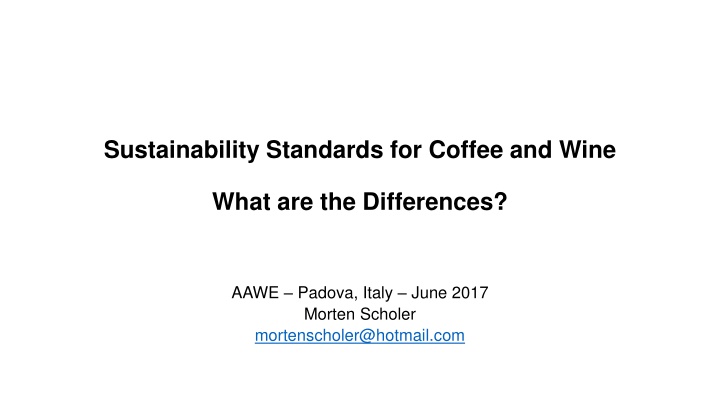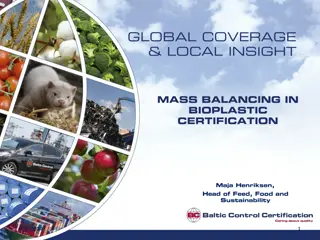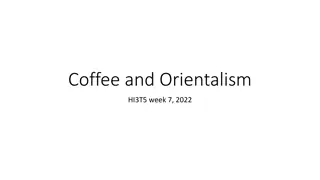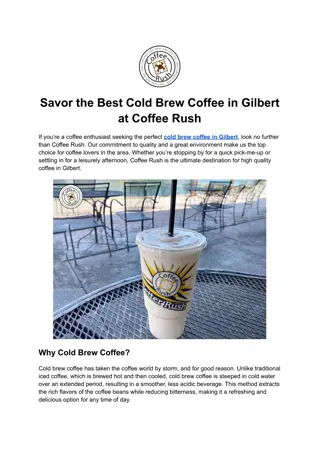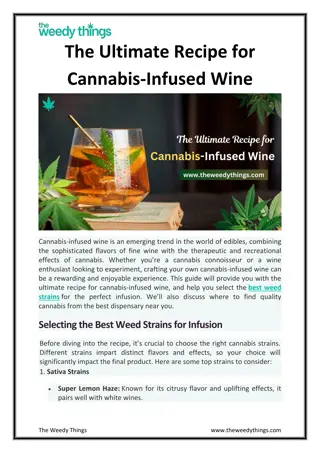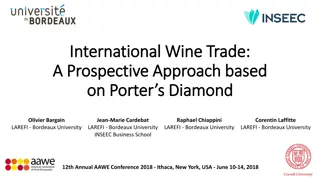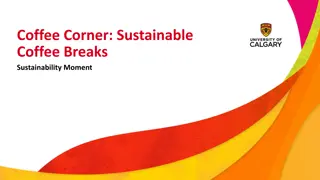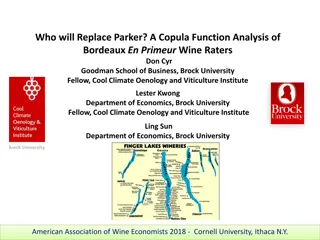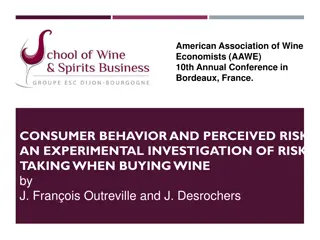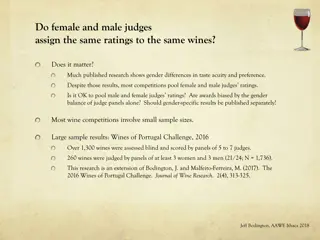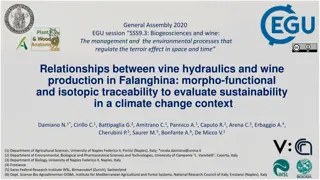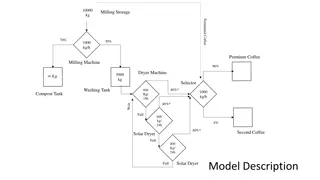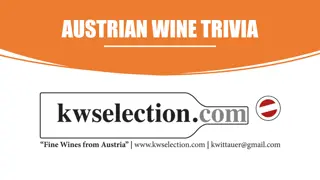Sustainability Standards for Coffee and Wine: Key Differences
Differences between sustainability standards for coffee and wine in terms of value chain complexity, quality enhancement options, company sizes, and global standards complexity. Explore the origins, focus, and key dimensions of these standards.
Download Presentation

Please find below an Image/Link to download the presentation.
The content on the website is provided AS IS for your information and personal use only. It may not be sold, licensed, or shared on other websites without obtaining consent from the author.If you encounter any issues during the download, it is possible that the publisher has removed the file from their server.
You are allowed to download the files provided on this website for personal or commercial use, subject to the condition that they are used lawfully. All files are the property of their respective owners.
The content on the website is provided AS IS for your information and personal use only. It may not be sold, licensed, or shared on other websites without obtaining consent from the author.
E N D
Presentation Transcript
Sustainability Standards for Coffee and Wine What are the Differences? AAWE Padova, Italy June 2017 Morten Scholer mortenscholer@hotmail.com
Coffee Flowering, cherries and green beans http://upload.wikimedia.org/wikipedia/commons/c/c7/Coffee_Flowers.JPG
Coffee Two species Arabica Robusta 60 % 40% Share of world production Latin America, East Africa, South East Asia Vietnam + other S.E. Asia, Brazil, West/Central Africa Fine-flavoured aromatic (1.0 1.5%) Strong and harsher (filler) ( 2% ) Quality (Caffeine)
Coffee Leading sustainability standards Standards with a main dimension Standards covering all dimensions Dimension Organic Rainforest Alliance Environment UTZ Certified Amsterdam, Netherlands Utz Certified (Biodynamic, Shade-grown, Bird-friendly) ................ http://www.fairtrade.org.uk/images/homepage_new/images/logo.gif 4C ASSOCIATION Fairtrade (FLO) 4C (GCP) Social Fair Trade USA ............. Nespresso AAA Starbucks C.A.F.E. Practice Keurig Green Mountain s Responsible Sourcing Economic
Coffee and wine Four structural differences - Value chain (parties involved and physical transformations) Complex for coffee simpler for wine - Quality enhancement ( manipulation ) Only few options in coffee many in wine - Size of companies (relative size) Big in coffee (some have +10% of world trade) small in wine (all below 3%) - Sustainability standards Coffee is more complex than wine (coffee has worldwide standards, with more processes, locations and partners (sometimes illiterate))
Sustainability standards Origins and focus Coffee Wine Importing countries Consumers in the Netherlands and elsewhere in Europe Where were the standards initiated? Producing countries Grape growers and winemakers Which dimension was first in focus? Social with focus on fair prices and later also on other aspects Environment with shifts to organic farming and other nature-oriented practices Nature in focus Concern about nature and care for the health of producers What was the rationale behind the initiatives? Solidarity expressed for poor coffee growers and their families
Sustainability standards Geographical range Coffee Wine Standards are global Standards are national or regional/local
Sustainability standards Value chain complexity Coffee Wine Long value chain Short value chain (one place) Field work Harvest In-land trading Primary processing (dry / wet) Milling Sorting Stuffing (bags or bulk) Sale from exporter . Border .. Shipping Storage In-land transportation Roasting Blending Packing Sale to professional or retail Grinding Brewing Serving drinking Field work Harvest De-stemming, sorting, crunching Maceration Fermentation Storage (aging) Blending Bottling Sale from producer ... Border Shipping Storage In-land transportation Sale to professional or retail Serving drinking
Sustainability standards Geographical spread in blends Coffee Wine Geographical spread High Geographical spread Next to none Example of a typical blend (Arabica) Chile, COYAM, Emiliana, Biodynamic 40% Brazil (for body and sweetness) 25% Colombia (body and acidity) 20% Guatemala (aroma and flavour) 15% Kenya (acidity and brightness) 38% Syrah 27% Carm n re 21% Merlot 12% Cabernet Sauvignon 1% Mourv dre, 1% Petit Verdot
Sustainability standards Number of people, education, language, access to information Coffee Wine People involved Many People involved Few (relatively) Example Uganda Standard: 4C (Global Coffee Platform) Example New Zealand Standard: Sustainable Winegrowing NZ NUCAFE Cooperative 5,100 farmers ( = 1% of Uganda s farmers) 4 local languages + English Education often modest Access to information often modest Uganda produces 2% of the world s coffee 254 wineries and 1,918 vineyards 98% of NZ s vineyard area is certified One language Education good Access to information easy New Zealand produces 1% of the world s wine
Conclusion Sustainability standards are more complex to develop and to implement for coffee than for wine Not the same as easy for wine Coffee Wine Standards are global Value chains are long Blends: Input from many countries Producers: Many with limited education and access to information Language: Often several Standards are national or local Value chains are short Blends; Input is local Producers: Few (relatively) with good education and access to information Language: Usually one only
